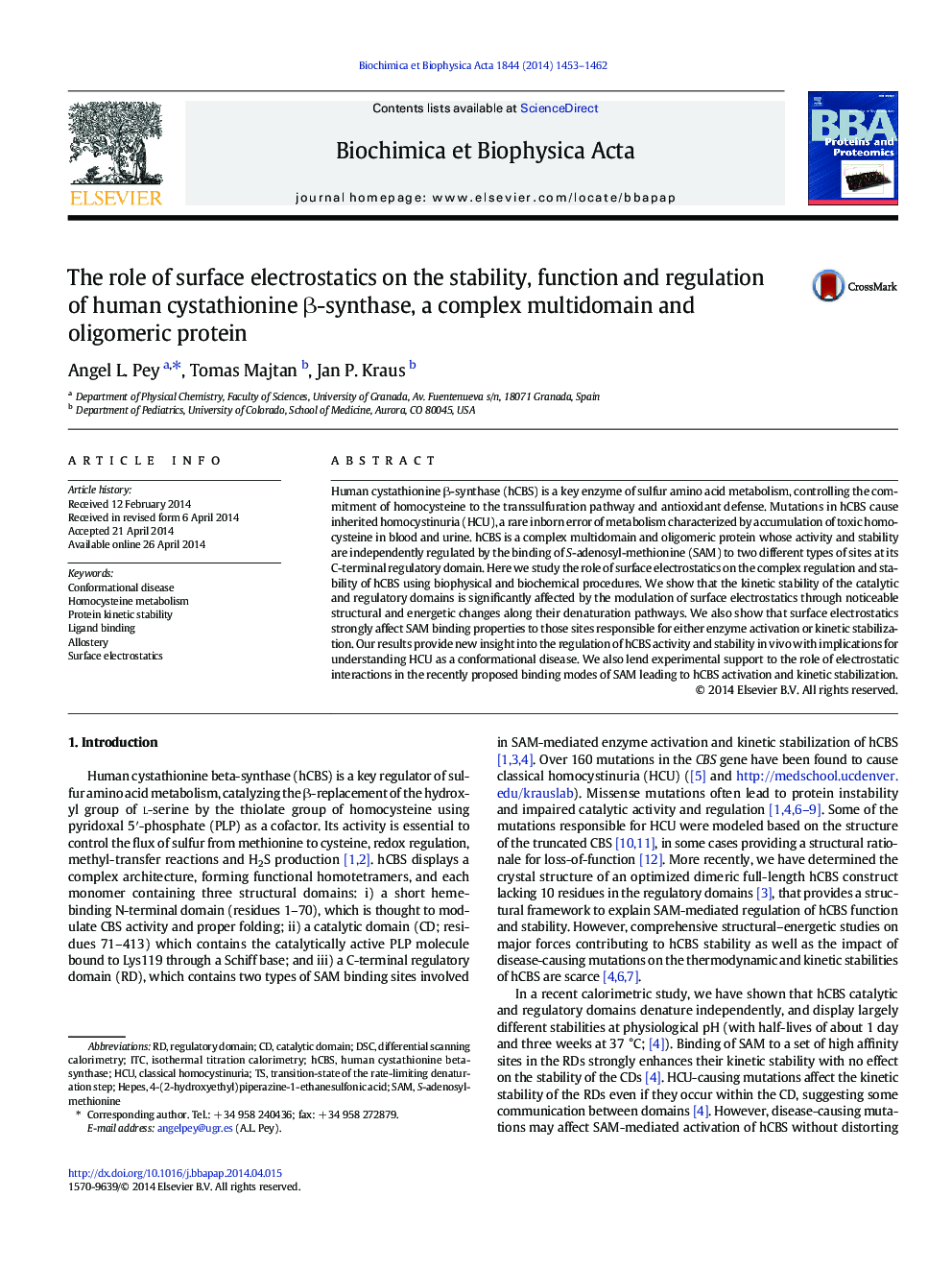| Article ID | Journal | Published Year | Pages | File Type |
|---|---|---|---|---|
| 10537541 | Biochimica et Biophysica Acta (BBA) - Proteins and Proteomics | 2014 | 10 Pages |
Abstract
Human cystathionine β-synthase (hCBS) is a key enzyme of sulfur amino acid metabolism, controlling the commitment of homocysteine to the transsulfuration pathway and antioxidant defense. Mutations in hCBS cause inherited homocystinuria (HCU), a rare inborn error of metabolism characterized by accumulation of toxic homocysteine in blood and urine. hCBS is a complex multidomain and oligomeric protein whose activity and stability are independently regulated by the binding of S-adenosyl-methionine (SAM) to two different types of sites at its C-terminal regulatory domain. Here we study the role of surface electrostatics on the complex regulation and stability of hCBS using biophysical and biochemical procedures. We show that the kinetic stability of the catalytic and regulatory domains is significantly affected by the modulation of surface electrostatics through noticeable structural and energetic changes along their denaturation pathways. We also show that surface electrostatics strongly affect SAM binding properties to those sites responsible for either enzyme activation or kinetic stabilization. Our results provide new insight into the regulation of hCBS activity and stability in vivo with implications for understanding HCU as a conformational disease. We also lend experimental support to the role of electrostatic interactions in the recently proposed binding modes of SAM leading to hCBS activation and kinetic stabilization.
Keywords
Surface electrostaticsHEPESHCBSHomocysteine metabolismSAMITCHCUDSC4-(2-Hydroxyethyl)piperazine-1-ethanesulfonic acidS-adenosyl-methionineAllosteryConformational diseaseRegulatory domainCatalytic domainLigand bindingclassical homocystinuriaIsothermal titration calorimetryDifferential scanning calorimetry
Related Topics
Physical Sciences and Engineering
Chemistry
Analytical Chemistry
Authors
Angel L. Pey, Tomas Majtan, Jan P. Kraus,
